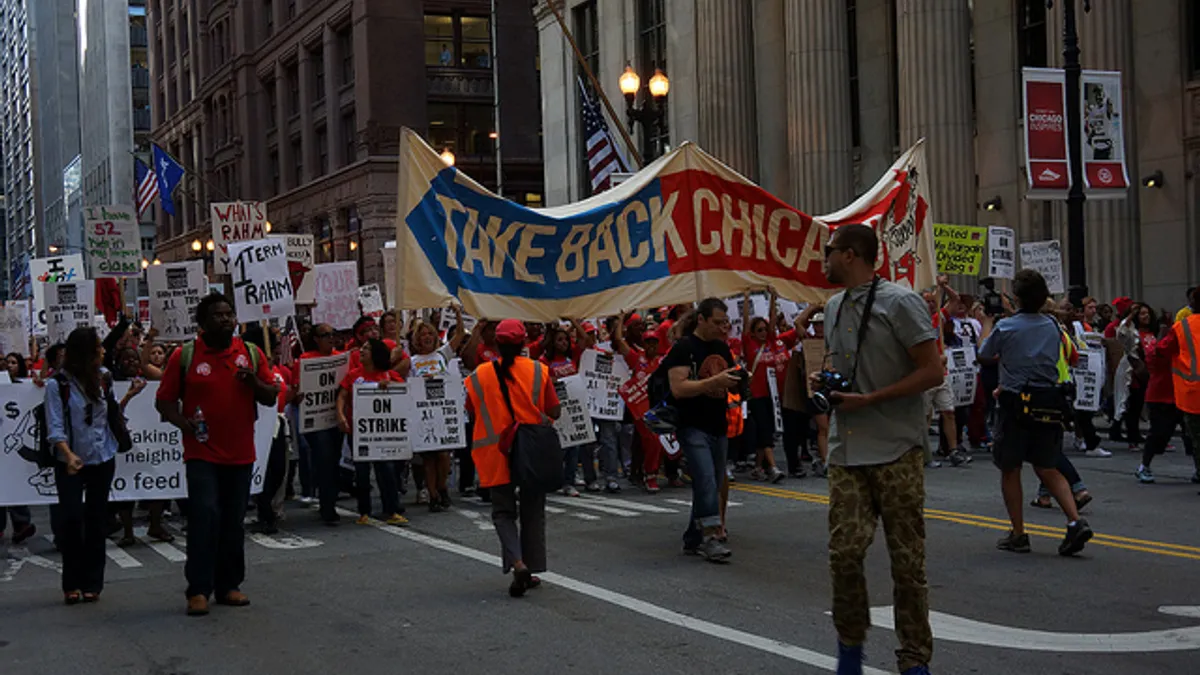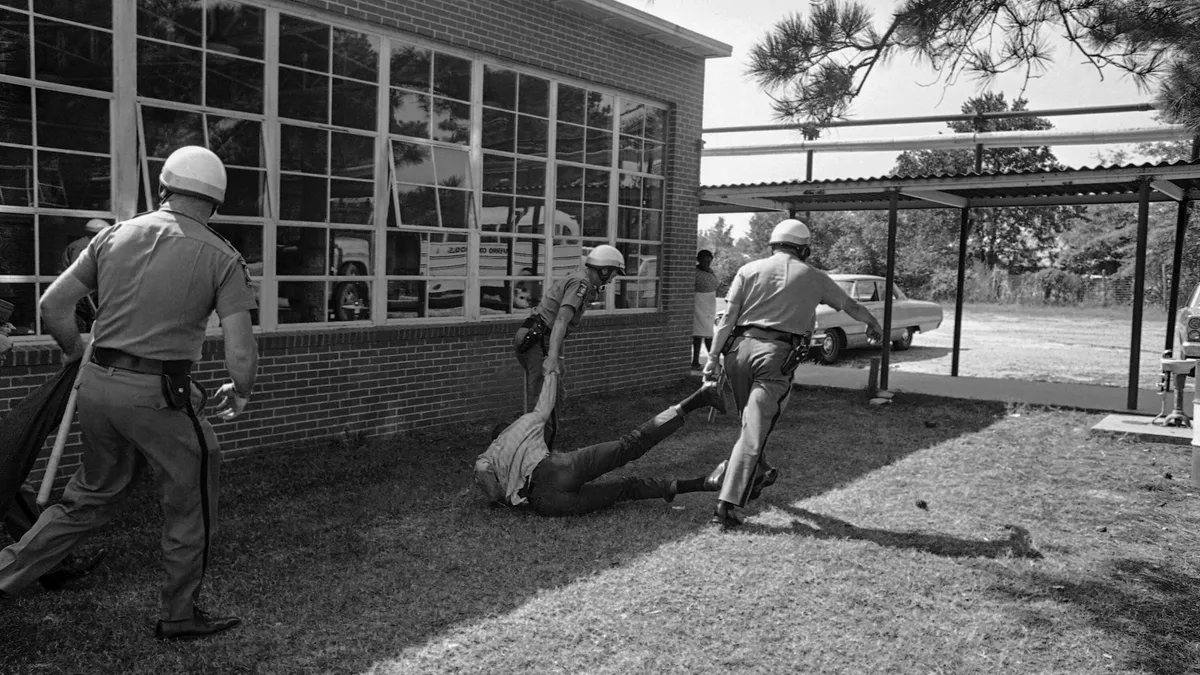Dive Brief:
- On Monday, Chicago schools officials released a 2015-16 budget that includes 479 teacher layoffs and cuts to executive staff but schools could face even deeper curtailments if additional state dollars don't materialize.
- The $5.7 billion budget includes $480 million in new state dollars, the arrival of which is not at all certain, and also includes substantial borrowing that will raise long-term costs for taxpayers.
- Overall, the budget represents a 1% decline from last year.
Dive Insight:
Budgeting negotiations are always a minefield for urban districts, which often grapple with powerful teachers unions, powerful stakeholders and tight constraints on where they can find dollars. But Chicago's troubles are a particular kind of stormy. A highly contested $680 million payment into the city's pension fund will come due at the end of a school year. The union contract lapsed in June, and relations between the school district and union haven't been good in years.
Teacher union representatives have been critical of the proposal — and they have the power to significantly complicate the budgeting process. Negotiations to write a new one for the coming year broke down last week but the two sides will have to come to some sort of deal. The district may have to substantially alter their budgeting plans depending on the outcome of those talks, when they resume.
But not all is as it seems in the budget deal. For example, take those 479 teacher layoffs. According to the Chicago Sun-Times, many will likely end up in classrooms elsewhere in the city. There are over a thousand open teaching positions in Chicago schools right now, so even more teachers could be hired than laid off.
And the cuts to the executive budget, which will eliminate two of 10 executive staffers and result in $1 million in salary savings, are a tactical move on the part of CEO Forrest Claypool.
As if the budget brouhaha weren't enough, the district has been grappling with budget-related changes to school start and end times. More research is indicating that younger students should start school earlier and end earlier, while older students should start and end later. But when Chicago schools officials pushed back bell times as late as 4:30 p.m., parents and community members protested that the changes would prevent older students from taking care of younger siblings or picking up a shift at work. In the end, 34 schools will retain their normal class start and end times and eight got alternatives closer to their original schedule.













